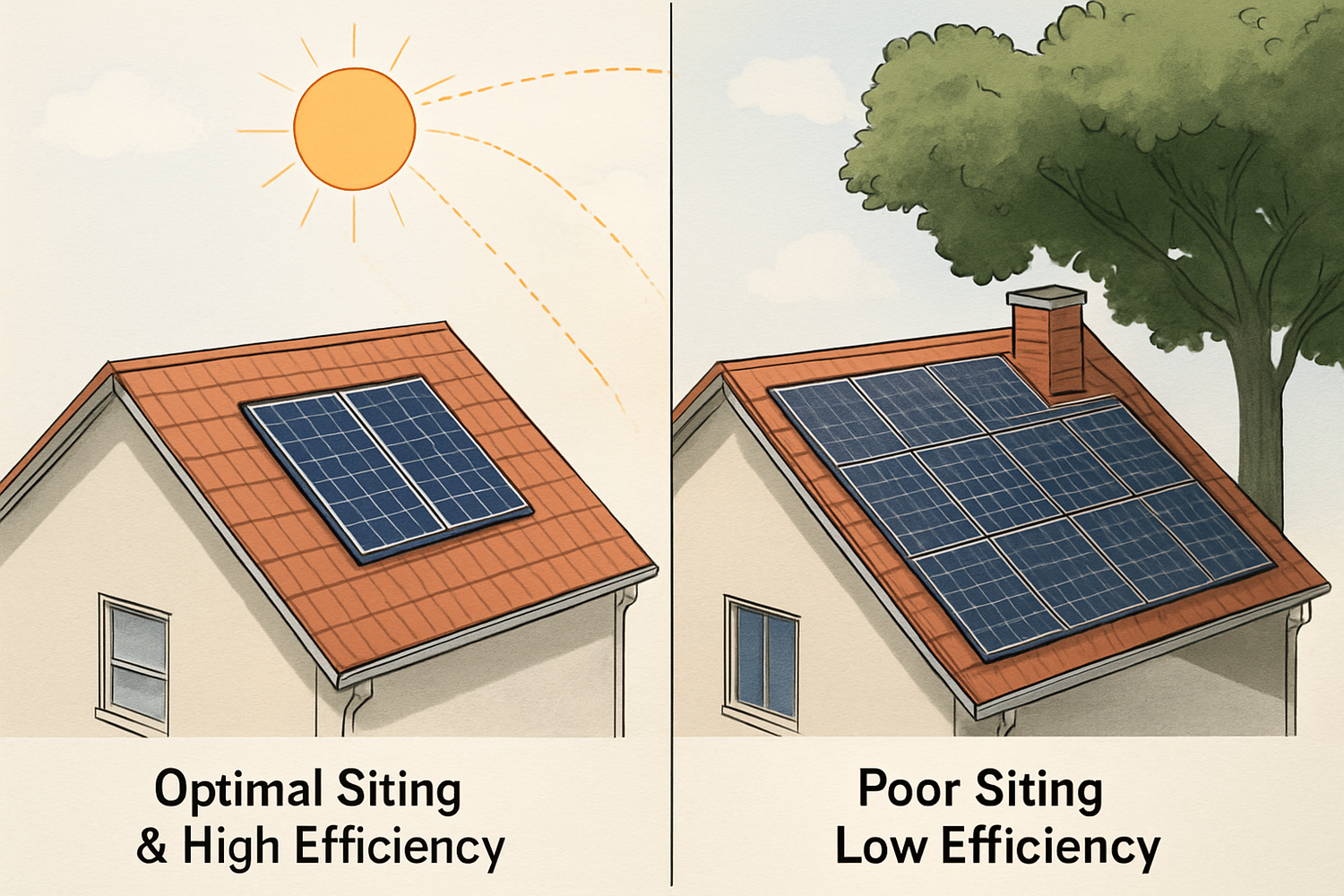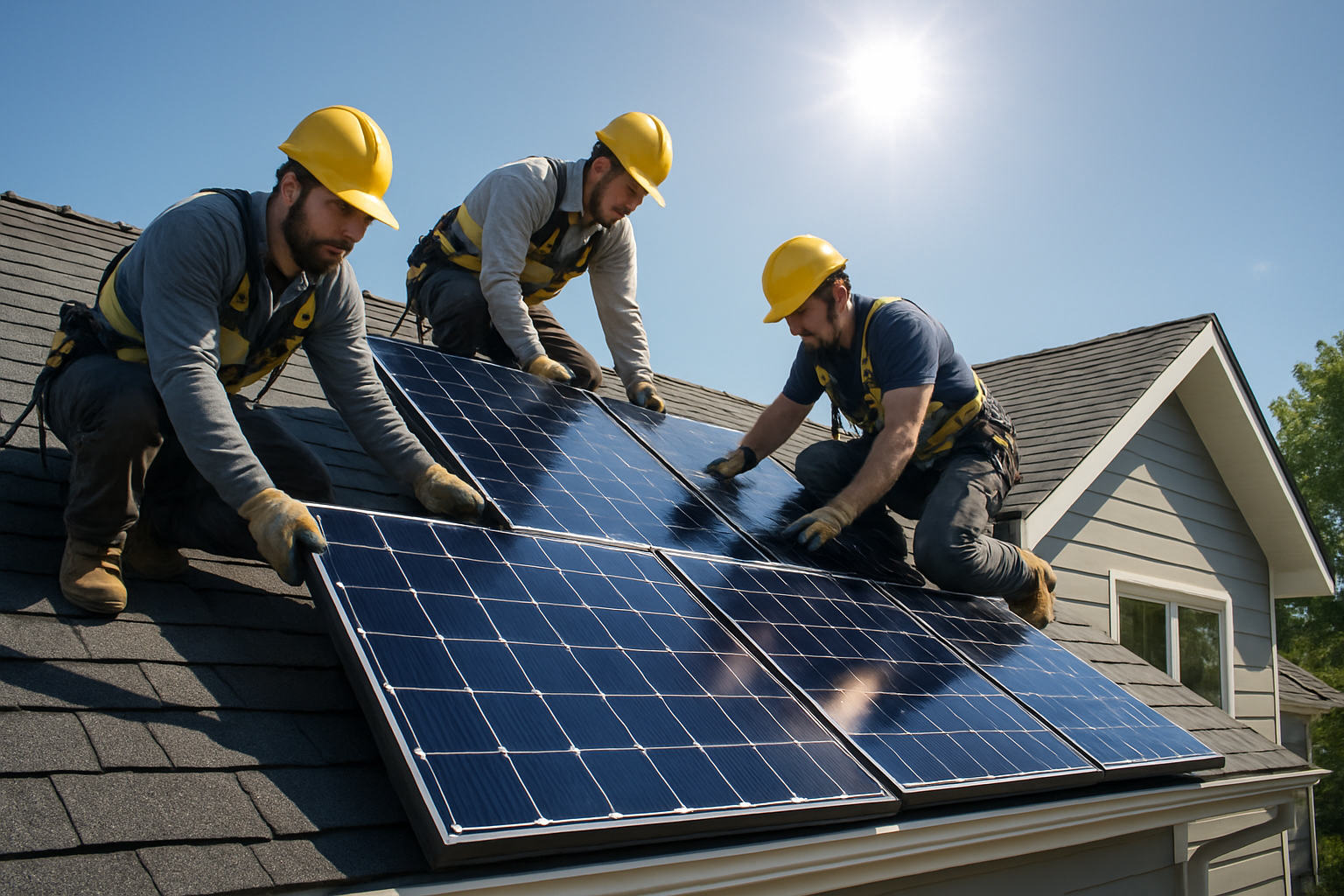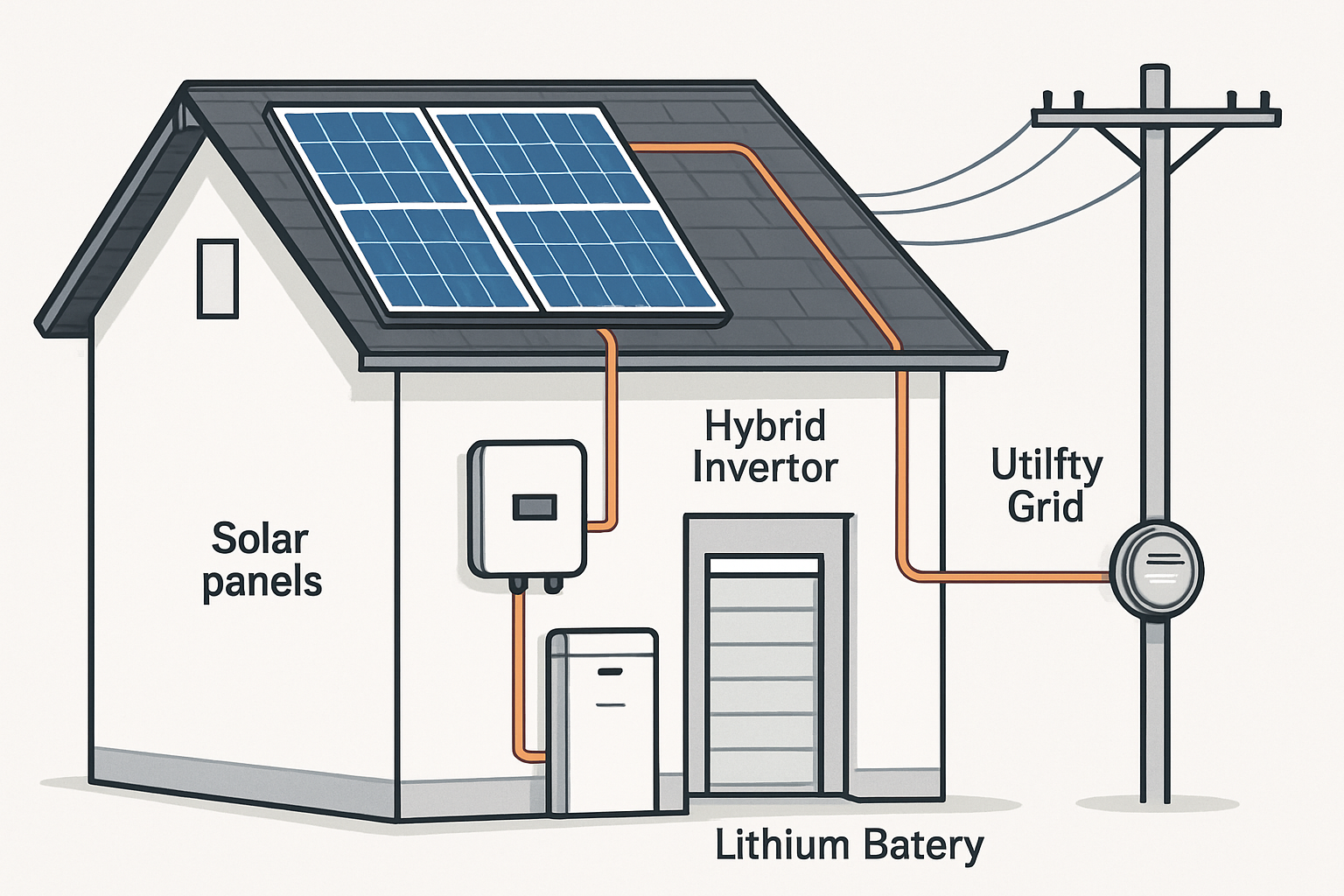In the pursuit of maximum solar energy, a common misconception arises: if a roof has some shading or a less-than-ideal orientation, simply adding more panels can compensate. This idea of using brute force—oversizing the solar array—seems logical on the surface. Yet, it often leads to wasted investment and disappointing performance. The truth is that proper system design, starting with optimal siting, is the unshakable foundation of an efficient solar energy system. No number of extra panels can truly fix a fundamental placement problem.

The Pillars of Performance: Getting Siting Right
The location and arrangement of your solar panels dictate their potential from day one. Three core elements—orientation, tilt angle, and shading—determine how much sunlight the panels can convert into electricity. Overlooking these factors is a frequent and costly solar installation mistake.
Orientation and Tilt: Aligning with the Sun
For maximum energy capture, a solar array's orientation (the direction it faces) and its tilt (the angle relative to the ground) should be optimized. In the Northern Hemisphere, south-facing arrays receive the most direct sunlight throughout the day. The ideal tilt angle is often close to the property's latitude. According to research from the IEA, in locations with less direct sunlight, output can be optimized with a tilt up to 15° lower than the site's latitude. Some designs use east-west orientations; as noted in a German study, this can lead to more consistent generation during morning and evening hours, balancing the load on the grid.
The Shadow Problem
Shading is one of the most detrimental factors for solar production. A shadow from a tree, chimney, or adjacent building falling across even a single panel can significantly reduce the output of the entire string of panels connected to it. This is because panels in a string are linked, and the lowest-performing panel can dictate the current for all others. Seasonal changes also affect shadows; the low winter sun can cast long shadows that might not be present in the summer, making a year-round shade analysis crucial.
Beyond Sunlight: Local Conditions
Siting also involves considering local environmental factors. For example, placing panels in an area prone to dust accumulation or heavy snow drifts without easy access for cleaning will compromise performance. Likewise, ensuring adequate airflow around panels helps dissipate heat, as excessive temperatures can reduce their efficiency. Proper siting accounts for these variables to maintain system health and output.
Understanding the Oversizing Fallacy
The strategy of oversizing a solar array is not inherently flawed, but its purpose is often misunderstood. When applied correctly, it's a tool for optimization. When used as a crutch for poor siting, it becomes an expensive error.
What is Panel Oversizing?
Panel oversizing refers to installing a solar array with a higher DC (Direct Current) power capacity than the AC (Alternating Current) power rating of the inverter. This is measured as the DC-to-AC ratio. For instance, a 6 kW DC array paired with a 5 kW AC inverter has a DC-to-AC ratio of 1.2. A common industry practice is to oversize by 20-30%.
The Legitimate Goal of Oversizing
A properly oversized system can maximize the inverter's energy production throughout the day. Solar panels rarely operate at their peak laboratory-tested wattage due to real-world conditions like cloudy weather or lower light in the morning and evening. By oversizing the array, you can help the inverter reach its maximum power output earlier in the day and sustain it for longer, even in imperfect conditions. When the panels produce more DC power than the inverter can convert, the excess is clipped. This clipping is a normal and expected part of an optimized design.
Why It Fails as a Solution for Bad Siting
The myth is that adding 25% more panels will compensate for a 25% production loss from shading. This logic is flawed. The shaded panels do not simply produce less; they create resistance that can throttle the output of the entire string. The extra, unshaded panels cannot force their energy through this bottleneck. You are left with an oversized, underperforming system where a significant portion of your investment is rendered ineffective for large parts of the day. You pay for panels that never get the chance to contribute meaningfully.
A Tale of Two Systems: A Data Comparison
The difference between a well-sited system and an oversized, poorly sited one is not subtle. The numbers clearly show that intelligent design triumphs over sheer size. A focus on panel oversizing impact without considering siting leads to poor outcomes.
Scenario A: Smart Siting, Standard Size
Imagine a 5 kW system installed on an unshaded, south-facing roof. It operates under ideal conditions, consistently converting sunlight to electricity during peak hours. Its performance is predictable and aligns with its rated capacity, delivering a strong return on investment.
Scenario B: Poor Siting, Oversized Array
Now consider a 6 kW system—20% larger—installed on an east-facing roof that gets significant shade after 2 PM. While it may produce well in the morning, its output plummets in the afternoon. Despite its larger size, its total daily energy production is consistently lower than the 5 kW system. The additional cost for the extra panels and mounting hardware is never recovered through performance.
Performance at a Glance
The table below offers a simplified comparison of how these two systems might perform. While actual numbers depend on specific location and equipment, the trend holds true.
| Feature | System A: 5 kW (Optimal Siting) | System B: 6 kW (Poor Siting) |
|---|---|---|
| Panel DC Capacity | 5,000 Watts | 6,000 Watts |
| Siting Conditions | Unshaded, South-Facing | Afternoon Shading, East-Facing |
| Estimated Annual Production | ~7,500 kWh | ~6,000 kWh |
| System Efficiency | High | Compromised |
| Return on Investment (ROI) | Strong | Poor |
Build Smart, Not Just Big
Achieving energy independence with solar power is about intelligent engineering, not just accumulating hardware. The performance of a solar energy system is determined by its design, with siting as the most important element. While panel oversizing is a valid technique to optimize a well-placed array, it is not a remedy for poor solar panel siting. A thorough site assessment that accounts for orientation, tilt, and potential shading is the first and most critical step. As the IEA's Technology Roadmap - Solar Heating and Cooling report notes, planning regulations should protect solar access to avoid performance reductions. Investing in a properly designed system, even if it's smaller, will yield greater energy production and superior financial returns compared to a larger, poorly sited array. Smart planning ensures your solar installation is a reliable, long-term asset.





Leave a comment
All comments are moderated before being published.
This site is protected by hCaptcha and the hCaptcha Privacy Policy and Terms of Service apply.